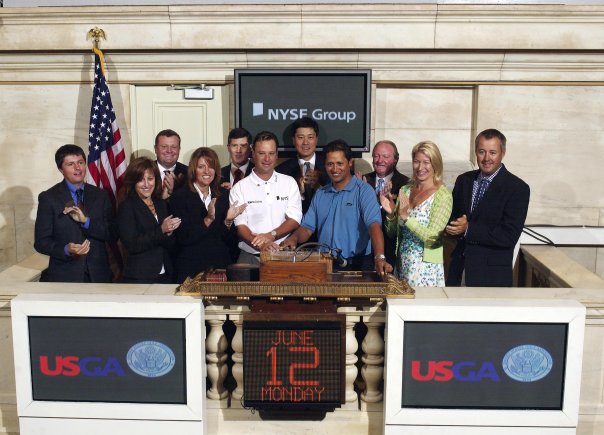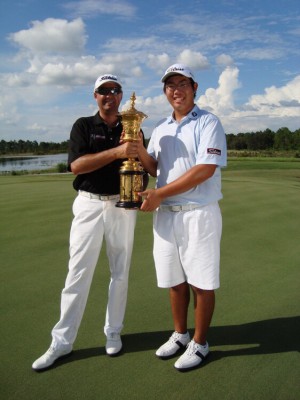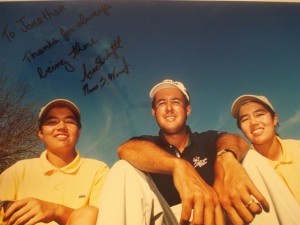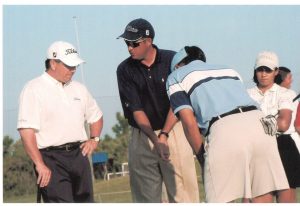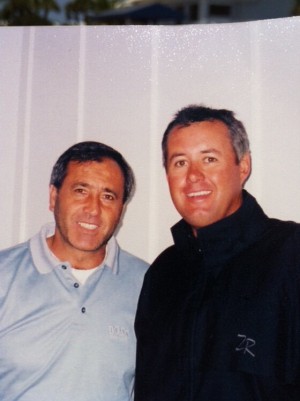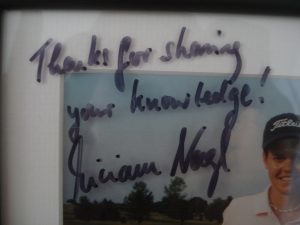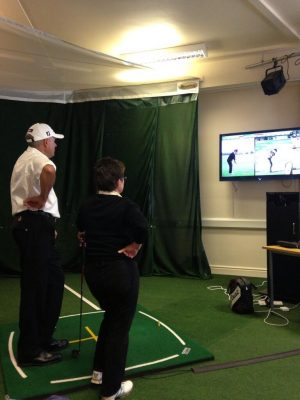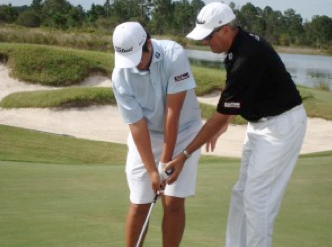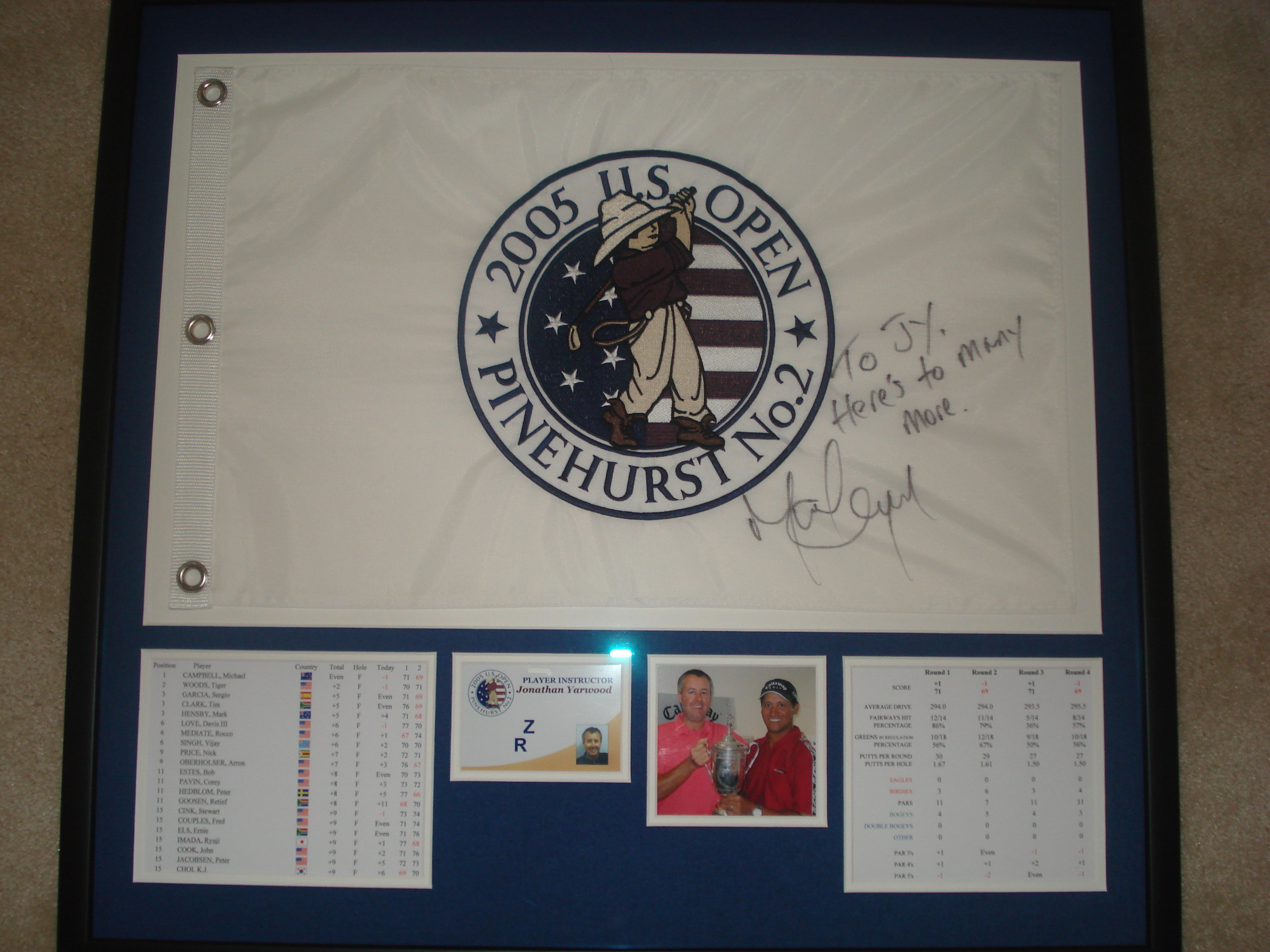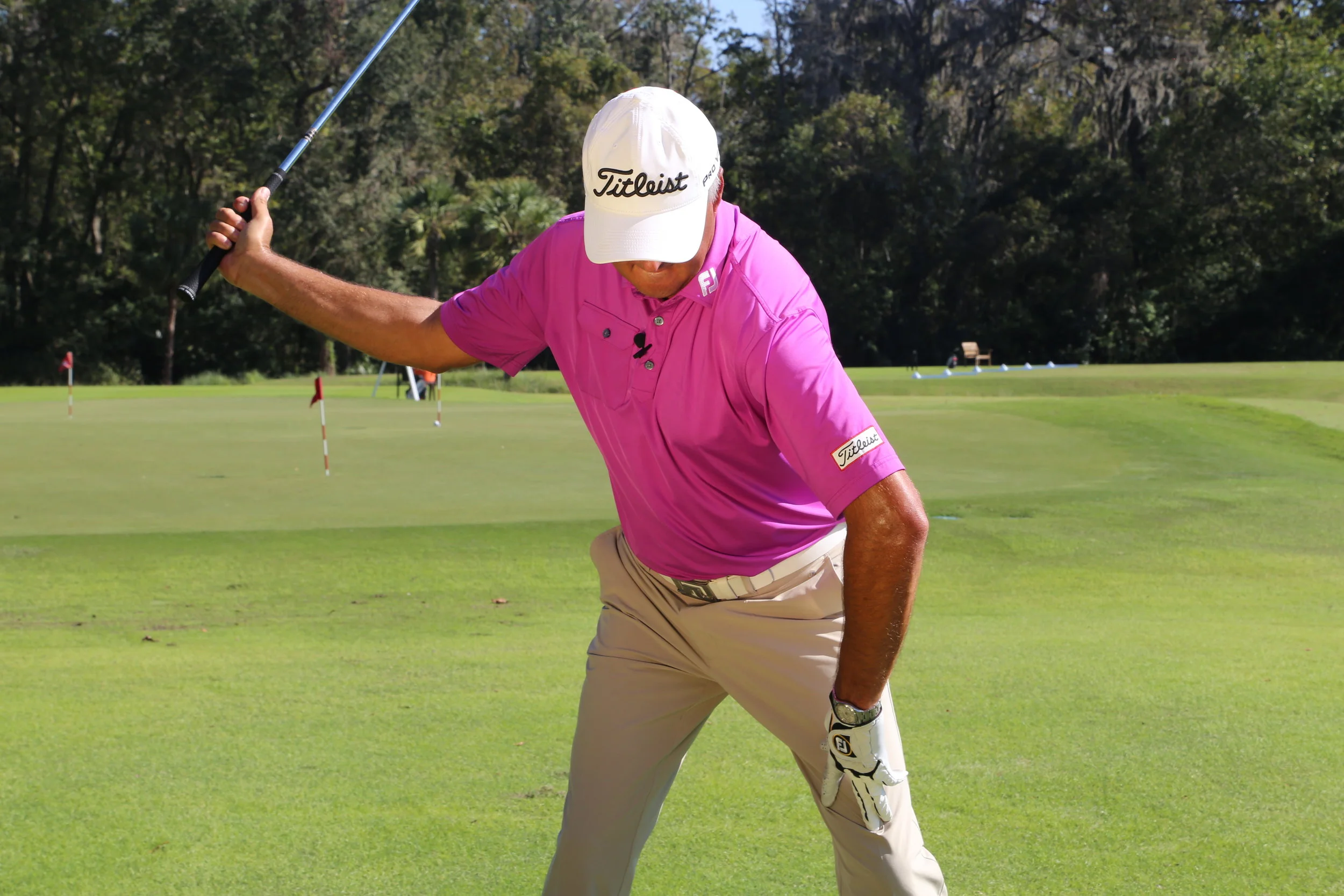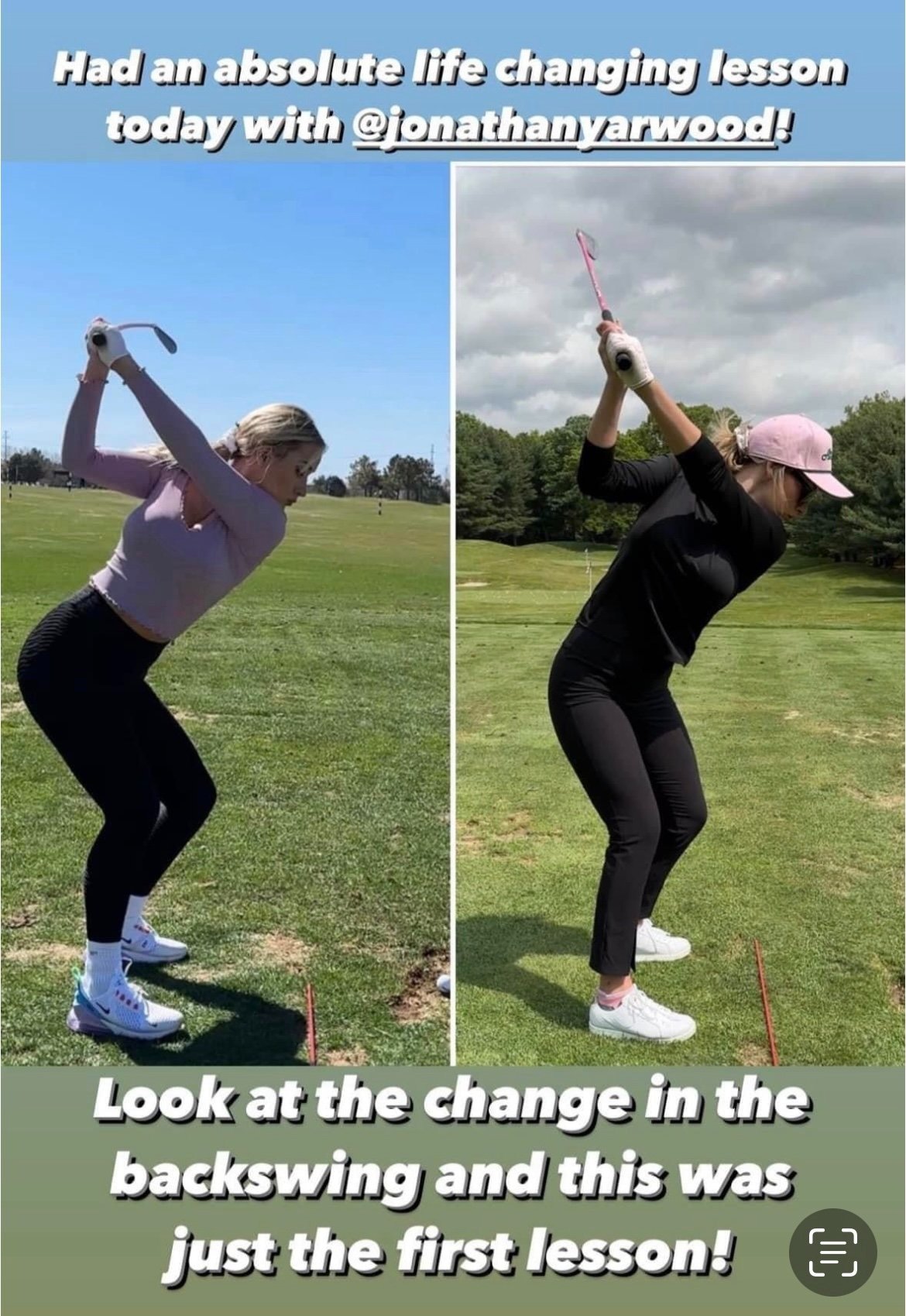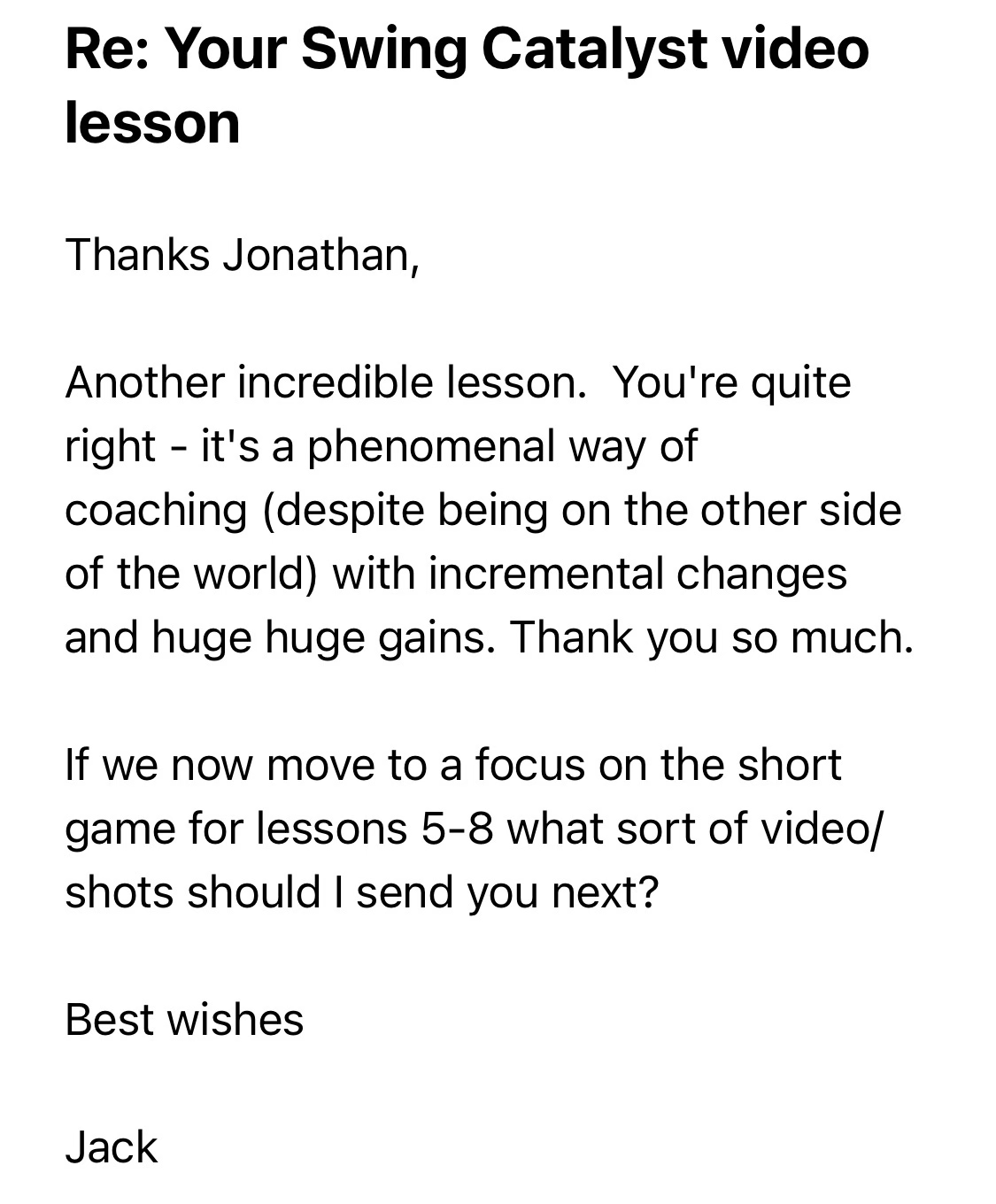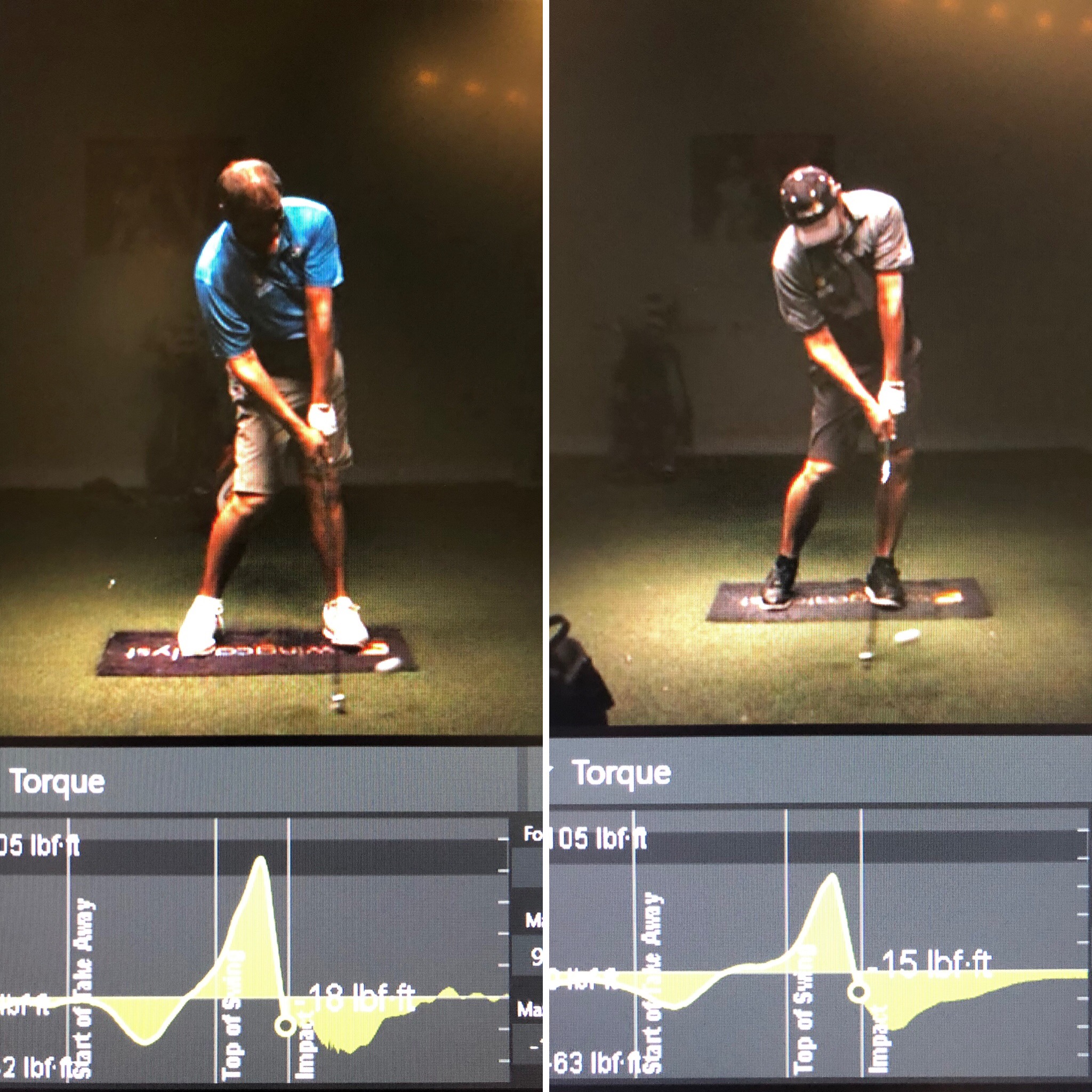Some special moments in Jonathan’s career...
Paige Spiranac is one of the most recognizable golfers in the world, and is now working with Jonathan to get her game dialed.
Recently, after some struggles with confidence and on-course anxiety, Paige began a journey to renew her passion for the game after taking a few quick lessons with Jonathan.
Watch the video above to she what she had to say after just one session.
Track her progress on Instagram @_paige.renee and @jonathanyarwood
Jonathan was a recent guest on the Travis Fulton Podcast. They discuss the golf swings of Viktor Hovland, Nelly Korda, Dustin Johnson, Paige Spiranac and more.
Take a look at the preview.
If you’re interested in watching the entire podcast, click on the YouTube link below:
Top 100 Instructor Jonathan Yardwood joins the Travis Fulton Pod.
** If you haven’t already subscribed to JY’s YouTube page, get moving! Loads of new amazing content inbound!
Below are some screenshots and texts from athletes coached by JY:
Feedback from online lessons
Outliers and Trends:
Historically, if you look back through golf, there have always been outliers and swing trends. Think Trevino, Darcy, Moore, Furyk, Bubba and such like for the ‘outliers’ style of swinging. I would categorize these as ‘idiosyncratic’ swings. The players who seem to buck the trend and throw out the rule book. Now we have a new kid on the block, Matt Wolff.
Wolff can only be good for golf and has sizzled onto the scene by winning in his third start. Gone are the days of ‘learning the ropes’ before you win or being intimidated by playing with your heroes. This does not happen anymore, welcome to the new generation.
Another curious thing about golf it that is has never been short on swing trends and fashion when you take a glance back. Ranging from sliding your legs because ‘Jack did it’, to the method that swept the scene for a while, Stack ‘n Tilt. With one-axis, two-axis, one-plane, two-plane, Hogan’s method, Golf Machine and others being adopted over the years. All the way through to the current day with the lead wrist in flexion because ‘Brooks and DJ do it’. Clearly, we can see that there is a pattern here of searching for the next big thing. Much of which might be due to the fascination and complexity of the sport; simply like no other. Or human nature with everyone looking for the ‘secret’. (I think, the secret is there is no secret by the way, but I digress).
Golf is extremely technically demanding and very complexed, much more than most sports which seem to be either reaction sports or simple, masterable-motorskill sports in controlled environments. There are many games within the game of our sport with separate skills and techniques to master within that.
It is one of the few sports to involve a static ball to which the player provides not only the propulsion, but the elevation as well as the direction. How to do this consistently has created tomes of work and occupied the minds of a myriad of people over the years from every conceivable background; from professors to blue collar workers.
So why is golf so fickle to trends and why do we not know the code yet?
The answers are deceptively simple, on one hand; human nature. But deceptively complexed on the other; physics and individuality.
For me, a great swing is one that can control the ball consistently. Indeed, I look for function not fashion or beauty in swings. When outliers come on the scene like Matt, I do not look at their technique through a critical lens, more of an inquisitive one. How does he seem to buck the trend and yet control the ball so well, hitting it prestigious distances in the process?
Often funky looking swings can hide some solid parts. The ball doesn’t lie or move by magic, it responds to physics. I try to not get distracted by the peripheral things in a swing that may mislead your eye in an outlier swing. Rather, focusing in on what makes it tick. A great swing to me is one that controls the ball consistently, not what it looks like.
Something is working, actually multiple things are. As a coach, if I can identify them, then I can help others. Not by following the inevitable new trend of ‘Swing your Swing’ or the ‘Matt Wolff method’ or hanging on every word his coach says as gospel. But by discovering some factors that make it function and finding them in other types of swings which have also historically worked. I call them the ‘common denominators”. Let’s delve into what he does so well, along with some of the other outliers to see how this thing works and what we can glean.
Common denominator #1: Dynamics:
Matt has a twitchy start. Twitchy in a good way. His little activation press of his body is a trigger to activate his major muscles to get ready for action. Trevino was the same, with a forward press of not only the club but the body too, which triggered his swing.
Obviously, Matt has developed himself into a fast-twitch athlete along the line by playing different sports as a kid (crucial if you want to be a good golfer). He has a curious backswing as we know. Raising the club off the ground in anger like some sort of caveman wielding a club to whack something. But that agricultural start and backswing belies the mechanics of what follows. He creates amazing ground reaction force and huge torque as his body changes direction. The club falls onto a very desirable plane as we will discover later. Allied to the dynamics is the vertical force that this move creates which propels the ball for miles.
For me, the term ‘dynamics’ is really a way of describing the kinematics of the movement. How it flows together and creates energy, then transfers that energy. Brooks’ swing below has some foibles in it, but it is covered and superseded by powerful dynamics which glue it together.
Common Denominator #2: Firing sequence:
image:Gforcegolf.com
In all great swings the transition from the backswing into the forward swing is a crucial element of functionality. Without exception, the great players shift their pressure towards the target as they approach the top. Most amateurs allow all the components to arrive and leave the top of their swing at the same time, something which accounts for many over the top swings. These players, do not do that. They shift pressure as their arms and club near the top, which creates what is called a firing sequence. It works from the ground upwards in order to maximize the ground reaction force we touched on earlier and will delve into in more detail later. The lower body starts first in the sequence with a small drift (about three inches for most), followed by the torso. The arms are then pulled along the kinetic chain and the club finally responds to the movement.
Firing sequences are similar in most sports that require a projectile to be struck by an object
The way the components interact in the downswing creates a well-timed firing sequence which all great swings have and all our ‘outliers’ have too. Matt Wolf changes direction so strongly, just look at his footwork and how his shoes twist. A sure sign of torque force being applied. Additionally, he has the ability to segmentally separate his upper and lower body to create a great X-factor stretch which is great work not only his sequence but his power too.
Image: Golfchannel.com X-Factor stretch and footwork of Matt Wolff
Image: Golfchannel.com X-factor, vertical force and sidebend. Note the late firing trail arm which is a trademark of great players.
Common denominator #3: Early Pressure shift (horizontal force):
Through research on GEARS systems and great work from places like AMG Golf (worth following), we have found that most players shift towards the target as they are completing their backswing. This creates horizontal and encourages torque and vertical forces at the right time along with giving the swing good timing through sequence. It is a commonality of all different types of swings and something the ‘outliers’ do so well.
By the time the lead arm is parallel to the ground, we are seeing around 75% of pressure in the lead foot with a shift of the center of pressure and pelvis toward the target. Some do it more, some less according to their swing type. But they all shift laterally as the swing completes.
(Images AMG Golf). Center of pressure and center of torso movement
Image: AMGGolf; Lateral pressure shift trace
Image:AMGgolf: Lateral motion of many players
Common denominator #4: Ground reaction force:
Ground Reaction Force is relative new on the scene in golf terms. With the use of Swing Catalyst 3D Motion plates, we are able to study how players use the ground to create speed. Not just in golf, but baseball, tennis and many other sports. We are understanding the code. It goes like this. Pressure shifts from the top of the swing as the player is still winding up. They then put the brakes on this pressure shift and start to apply a torque force as their body starts to rotate. Finally, the lead side starts to jump allowing vertical forces to come into play. These things combined create what’s known as a ground reaction force.
There are three major forces at play with ground reaction forces:
1. Horizontal force- Side to side movement.
2. Torque Force- The rotation and twisting against the ground.
3. Vertical Force- The push upwards and downwards.
There are also sheer forces involved, but we will discount those for simplicity.
Tigers sequence and ground reaction movements in the downswing
Ground reaction force improvements on the left. Improved sequence and magnitude. Michael Campbell May to June 2019.
Vertical Force: Look how Matt’s knees change flex. More on the way down to create energy against the ground, then straighten to create the vertical forcefrom it.
As Newton says, ‘For every action there is an equal and opposite reaction’. If you push down with say 200lbs, then the ground is pushing back with an equal amount. This can be used to generate energy and ultimately culminate in speed. The pushing down into the ground and lifting off the ground through impact are effective ways to get energy out of the ground through the body and into the club and ball. We know more about this than we ever did and modern players like Wolff are training to jump at impact. Indeed, Michael Campbell pictured is on the career comeback trail. Utilizing Ground Reaction Forces, he now hits it over 300 yards and further than in his prime.
Michael Campbell showing torque increase on the left
All the great players have used ground reaction forces, even the outliers. The difference is we can now measure it and we are more aware of it. We can also tune it better and create gym workouts to maximize the use of these forces. Matt is the epitome of an athlete using these forces, but many have done it before him.
Moreover, you can see in the middle frame that Matt increases his forward band and knee flex in his transition to increase the ground reaction force and to encourage the club to shallow with the downswing. A key power move for his style.
Ground reaction forces for Trevino.
Trevino planting then into sidebend and jump
Ground reaction Verticals Rory, Furyk, Wolff
Common demonator #5: Shallowing:
Shallowing of not just the club but also the lead arm is a common denominator of most swing styles, especially with a driver. One of the reasons for this is the club does not need to adjust course coming into the ball, leading to more speed and accuracy. Many amateurs get the club or armplane steep coming down. This leads to them putting the brakes on to adjust the course of the club coming into the ball. Obviously, this is at the detriment of speed and control.
The shallow track of the club of Matt Wolff.
Examples of shallowing of various swing styles (Scott, Furyk, Els, McIllroy, Woods)
Common denominator #6: Body opening and torque force:
The body opening in most sports that require you to hit a projectile with an object is a must-do. It has to be at the right time, but as you can see, it is present in all swing styles and gives the ball the ability to control three vital things for ball control:
1. The face.
2. The path.
3. The angle of attack.
The rotation of the body stops any additional lateral slide, creating another force in Torque force.
So many similarities to a golf swing, sidebend, rotation, kinematic sequence etc
Common Denominator #7: Side bend:
In yesteryear, players were taught to cover the ball at impact. There is some merit in that for an iron or if you hang-back. But we know that in order to get the right combination of vertical force and torque one should open in an angular or tilted fashion. This is side-bend, how the trail side bends as it rotates relative to the ground and spine. Again, a commonality of all great swings, but very pertinent in idiosyncratic swings. It is a swing secret for stabilizing the trail arm through impact which is a key factor in face control for the very best. Side bend is a vital element to ball control as well as power.
Common denominator #7: Lead leg posting (vertical force):
The final commonality that makes the ‘outliers’ not such outliers is the lead leg posting through impact. This creates vertical force and allows the player to use all the latent ground reaction force energy that they created earlier on in transition. If the twisting or torque are the brakes, then this really is the speed accelerator too many swings, especially Matt Wolf’s.
Trackman:
Trackman has played a huge part in golf development, especially for outlier type swings. It is a pandora’s box of information for the coach and player. But if it is used sensibly, it can create the correct ballistics and launch conditions to the most funky looking actions, thus making them functional. In the past, this would have not been possible as the coach simply could not see the minute details which Trackman can.
In my opinion, if anything has created strength in depth across the board in golf, it is Trackman.
Common denominators to most highly functional swings including outliers:
· Strong coil going back.
· Good sequence to create torque going back.
· Early pressure shift in transition (horizontal force).
· Separation of upper and lower body in transition.
· Club shallow coming down.
· Torque in transition (torque force).
· Side bend at impact.
· Lead leg posting at impact (vertical force).
· Body opening at impact.
Some different swing styles I see:
· Idiosyncratic-Furyk, Bubba
· One plane vertical-Thomas
· One plane flat-Kuchar
· Two axis-Day
· Single axis-Campbell
· Shut to open-DJ
· Single plane normal-Scott
· Spinner-Bo Weekly
· Glider-Charles Howell
· Verticals-Gary Woodland
· Tri-fector-Rose
Lots of swing styles, but all share some functional commonalities.
To “Swing your swing’ or not?:
By all means ‘Swing your swing’ if you have ‘match-up’s that work. For example, if you have a lead wrist in flexion at the top you’ll need:
1. Strong and early pressure shift in transition.
2. Shallow arm and club plane.
3. Increased side bend at impact.
4. Late firing trail arm at impact.
5. Speed.
6. Strength.
Have one of those missing and that lead wrist in flexion can cause some major issues, especially in weak kids who will react to the face by early extending for example.
Development approach:
If someone would have messed too much with Matt Wolff, then we might not have Matt Wolff! From that perspective leaving him alone in this case is a wise coaching move. Having said that, he has still worked on his swing, but worked on the speed and dynamics not the look and geometry, which is what most coaches do.
For every idiosyncratic swing that works, there are hundreds that do not as they do not have the match-up’s to make it work.
My approach is to make each person a great version of themselves. To do that, you need to know much about them. Things like:
· What leg do they post best on?
· What is their wingspan to height?
· What sports do they play?
· Which eye are the dominant in?
· Questions like that.
I work on blending geometry, synchonisation and dynamics to create a repeatable swing that controls the ball. The look and method to reaching this is on a case by case basis and really an instinctive call having been working with elite players for over twenty-five years of my life.
Work on ballastics and dynamics as much as the look of it. But I personally do not believe that you just smash it as hard as you can and find it. I like people to smash it, but I like a modicum of control and an eye on the long term of their career. I wouldn’t want a player to hit it hard with any old swing at fourteen to then have to rebuild it as eighteen as they can’t keep it on the map. I would prefer a kid to blend the ballistics with sound geometry that suits them and is fed at appropriate times and in the right proportions.
There is a history of players having the flair coached out of them by cookie cutter teaching. Matt Wolff has retained that flair, so you must take you hat off to him and his coach. But a word of warning, most players natural swings just do not work and never will. Most require a prescription of dynamic, sync and geometry work blending art and science together on a case by case basis. But nobody needs overly technical information and binding up in theory. As I say, ‘A great coach doesn’t show all they know, they use all they know without showing it”.
Conclusion:
There will always be outliers. I think it is fair to conclude that these outliers are not as ‘funky’ as they first appear. They have the same common denominators as normal looking swings, but the eye gets distracted by the unusual elements and concludes they must work on some sort of golf spacedust. Clearly, we have seen they do not. They work on the same juice as the rest of them and as we have seen, pretty conventional where it counts.
Golf and golf swings are fascinating in their complexity and individualization. I have never seen two the same and never will. Long may it continue, as I love figuring them out. Although as I mature as a coach I can recognize trends and methods, treating those two imposters just the same. I stick to common factors, physics and efficiency to make a person the best version of themselves they can be.
Swing your Swing for sure, but it still has to have certain things in there as we have seen. The ball responds to physics. If it has sound aspects to it, can control the ball and hit it far you will be a great future-proof version of yourself.


